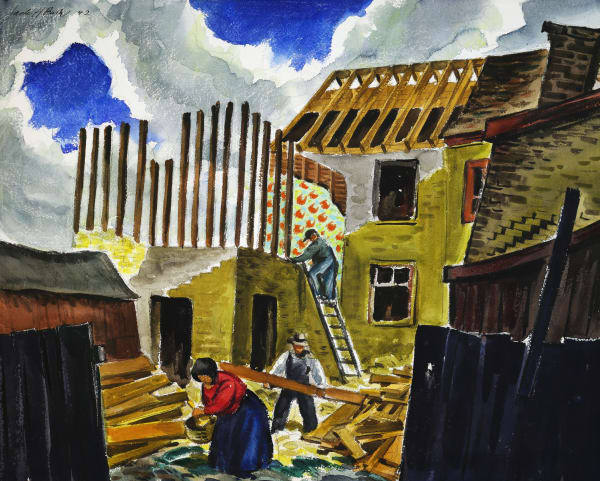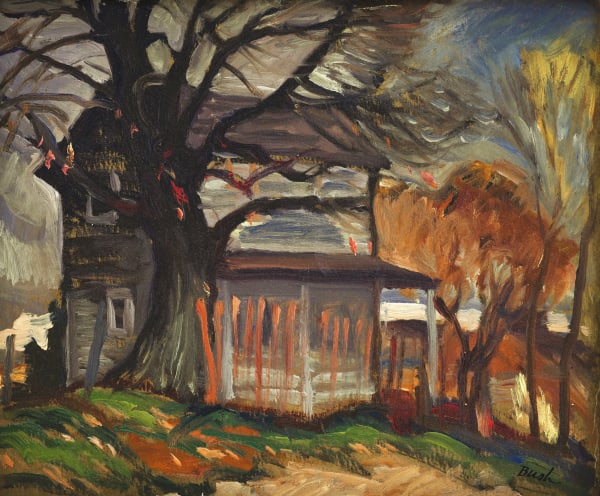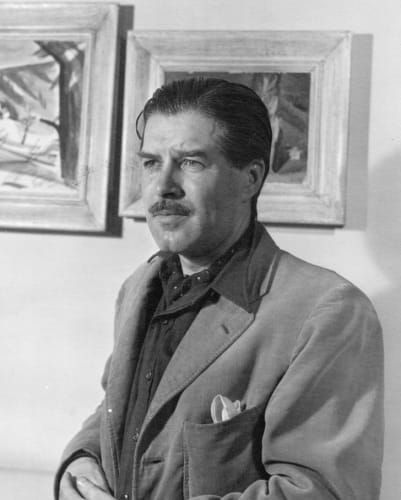"I don't want to be a leader – yet I am. I know it – but I'm scared."
Jack Hamilton Bush OC RCA (March 20, 1909 – January 24, 1977), commonly known as Jack Bush, was an influential Canadian painter recognized both for his early landscape works and later vibrant contributions to Color Field painting and Post-painterly Abstraction. A founding member of Painters Eleven, Bush earned international acclaim for his innovative use of colour and dynamic abstract style.
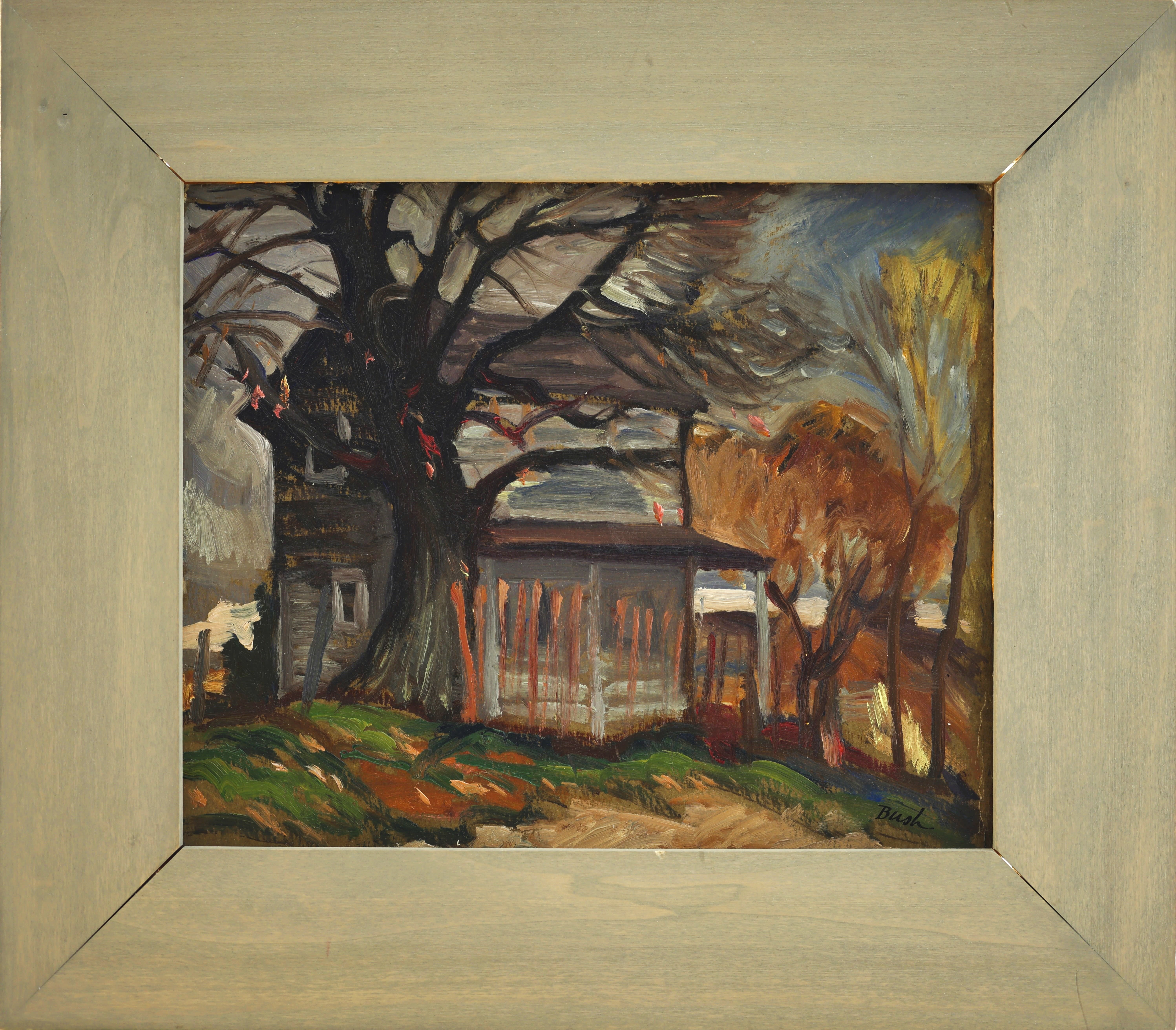 Jack Bush; Windy Day
Jack Bush; Windy Day
Early Life and Education
Born in Toronto, Ontario, Jack Bush spent his formative years in London, Ontario, and Montreal, Quebec. Initially inspired by Canadian landscape artists, especially the Group of Seven, Bush pursued formal art studies at the Royal Canadian Academy school in Montreal, studying under notable artists Adam Sheriff Scott and Edmond Dyonnet.
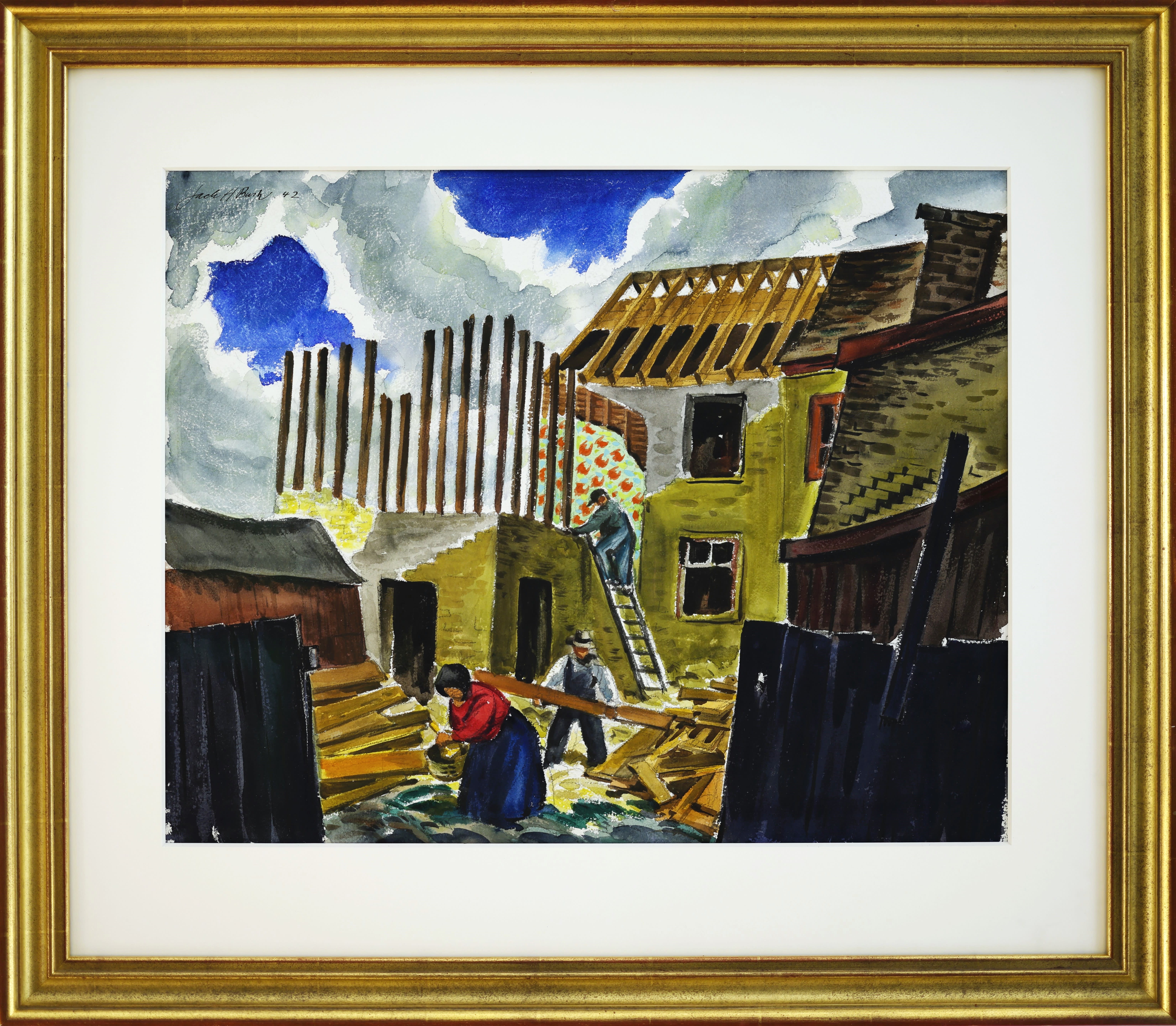
Jack Bush; The House Wreckers
In 1928, he moved to Toronto, working in his father's business, Rapid Grip Company, where he began to seriously cultivate his passion for fine art. Throughout the 1930s, Bush attended night classes at the Ontario College of Art (now Ontario College of Art and Design University), learning from prominent figures such as Frederick Challener, John Alfsen, J.W. Beatty, and Charles Comfort.
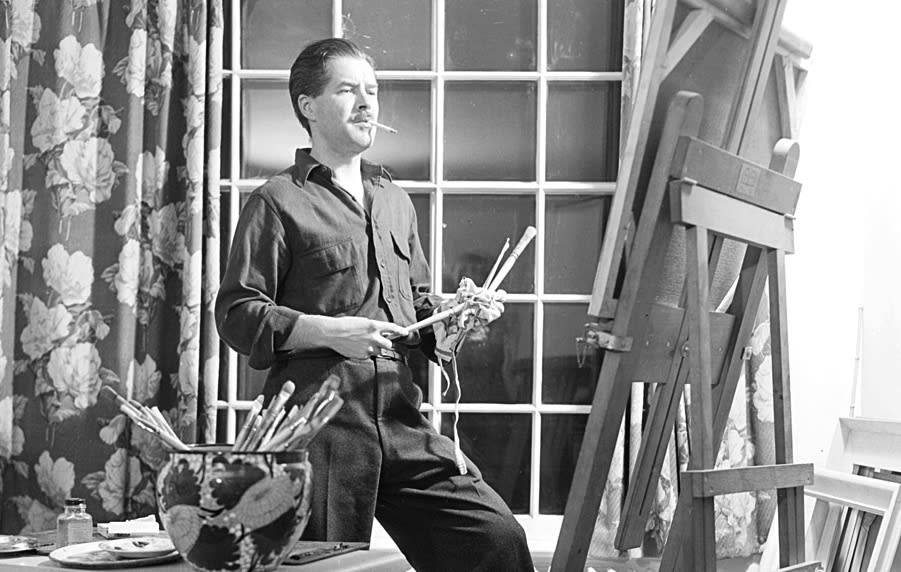
Commercial Art Career
Bush began his professional career as an illustrator at the age of 19 and maintained a successful commercial art practice for over 40 years. In 1942, he co-founded the commercial art firm Wookey, Bush, and Winter, gaining recognition in graphic design until retiring from commercial work in 1968.
Early Landscape Painting
Before embracing abstraction, Bush was deeply involved with landscape painting.As a member of both the Ontario Society of Artists and Canadian Group of Painters, his landscapes were characterized by expressive brushwork, evocative light, and a profound sensitivity to the Canadian environment. These formative years greatly influenced his understanding of colour and composition, laying a crucial foundation for his subsequent abstract explorations.
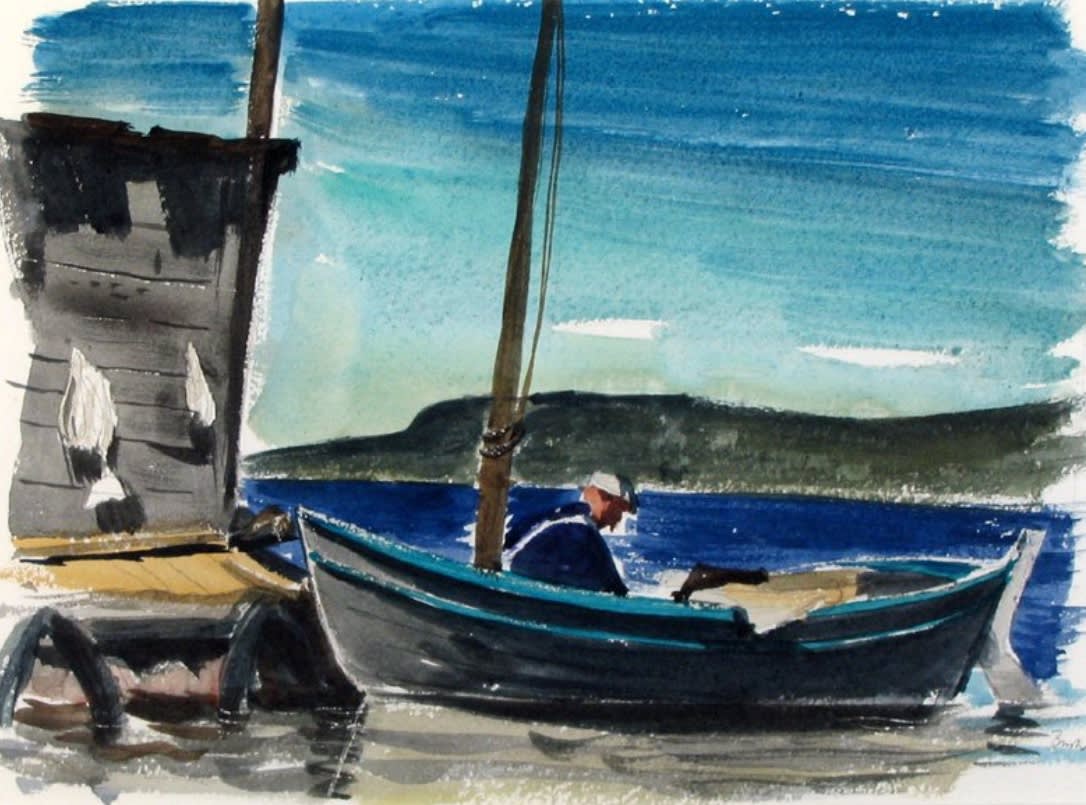 Jack Bush; The Fisherman
Jack Bush; The Fisherman
Transition to Abstract Painting
In the early 1950s, Bush shifted toward abstraction, profoundly influenced by psychiatrist Dr. Allan Walters, who encouraged expressive spontaneity, and by Bush’s exposure to abstract art in New York in 1950. This marked a pivotal turning point, enabling him to merge his deep-rooted landscape sensibilities with modern abstract expressions.
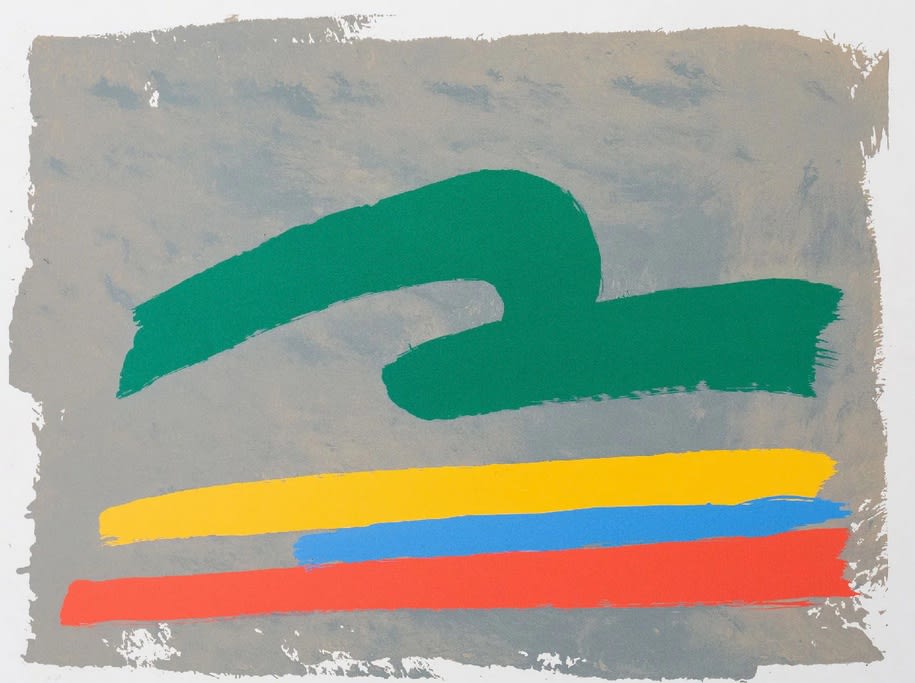
Jack Bush; Three Stripes
Painters Eleven and International Recognition
Bush was a founding member of Painters Eleven in 1953, a collective formed by William Ronald to champion abstract art in Canada. His friendship and mentorship with influential American critic Clement Greenberg were pivotal, guiding Bush towards his mature style characterized by vibrant colours and simplified abstract forms.
Bush's international reputation blossomed following his first solo exhibition in New York City in 1962, leading to ongoing exhibitions in prominent galleries globally, including André Emmerich Gallery in New York and Waddington Galleries in London. In 1967, Bush represented Canada at the São Paulo Biennial alongside Jacques Hurtubise.
Artistic Style and Legacy
Bush’s abstract paintings frequently referenced everyday objects, from gift wrapping to fabric patterns, yet always retained the underlying principles of landscape painting—composition, balance, and dynamic colour interactions. His mature works, including series like "Thrust," "Sash," and "Fishtails," showcased his mastery in achieving emotional resonance through abstraction. In 1966, he transitioned from oil paints to acrylics, further enhancing the vibrancy and clarity of his palette.
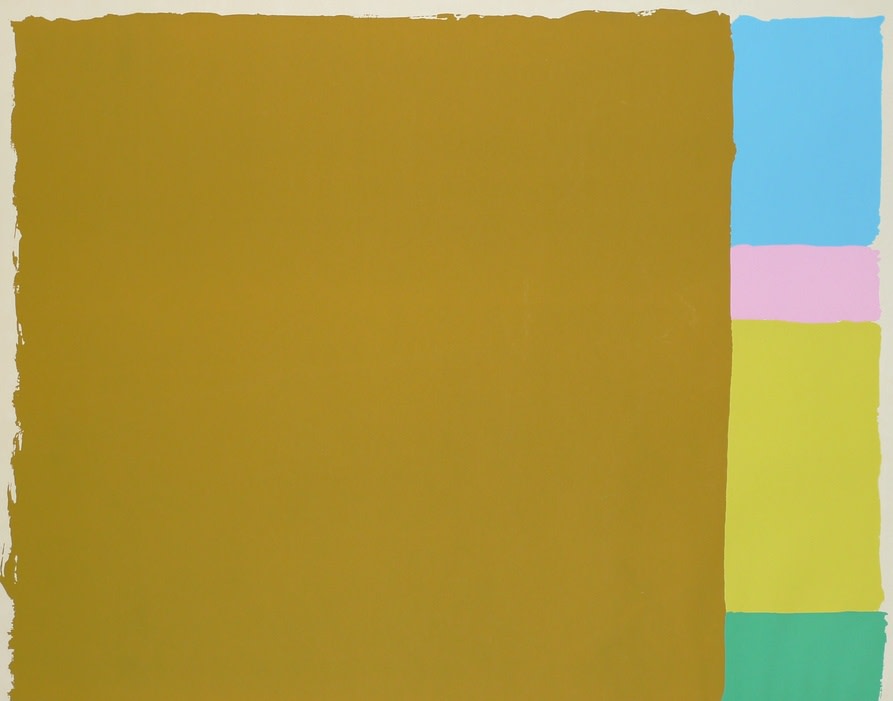
Jack Bush; Friday Morning
Honours and Exhibitions
Throughout his career, Bush earned several distinguished awards, including a Guggenheim Fellowship in 1968 and an appointment as Officer of the Order of Canada in 1976. He served prominently within Canadian art institutions, notably as Vice-President of the Ontario Society of Artists and President of the Canadian Society of Painters in Water Colour.
Major retrospectives of his work include exhibitions at the Art Gallery of Ontario (1976, touring nationally) and the National Gallery of Canada (2014). His paintings reside in major collections worldwide, such as the National Gallery of Canada, Art Gallery of Ontario, Museum of Fine Arts Boston, and Tate Gallery London.
Bush passed away in Toronto on January 24, 1977. His enduring legacy as a versatile and influential figure in Canadian art was celebrated in the 1979 documentary "Jack Bush" by the National Film Board of Canada and commemorated by Canada Post in 2009 through postage stamps featuring his iconic works.
